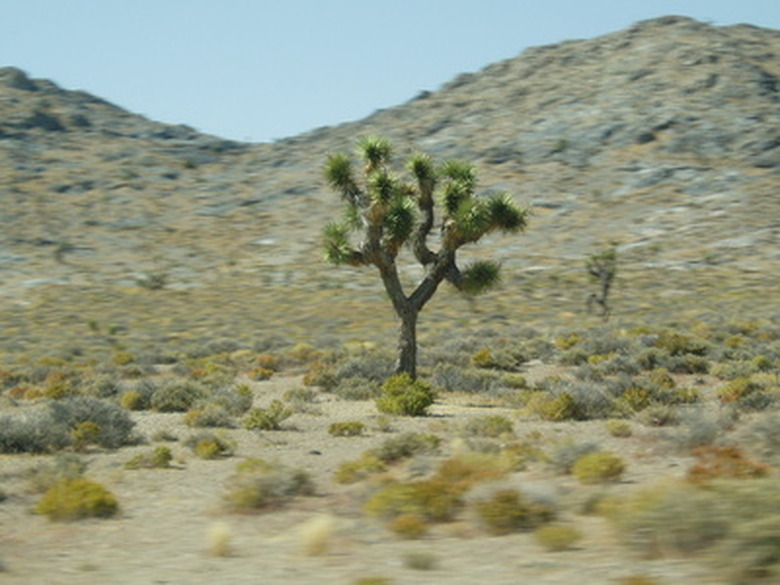How To Plant A Joshua Tree Seed
Things Needed
- Planting pot, 4 to 6 inches
- Native soil or cactus mix
The Joshua tree (Yucca brevifolia) is a slow growing member of the Agave family, eventually reaching heights of from 15 to 40 feet, with a root system that can extend up to 35 feet from the plant. Endemic to the Mojave desert, the Joshua has only one pollinator: the Pronuda or yucca moth. If pollinated, the tree will bloom in the summer and will drop its seeds in the fall, which is when you should collect them. Grab a pot full of soil while you are there as the Joshua tree prefers native soil. Start your seeds in early April.
Step 1
Pour the soil into the pot, to 2 inches below the rim, and water it until the excess water runs out of the bottom of the pot. After it drains, water it again.
- The Joshua tree (Yucca brevifolia) is a slow growing member of the Agave family, eventually reaching heights of from 15 to 40 feet, with a root system that can extend up to 35 feet from the plant.
- If pollinated, the tree will bloom in the summer and will drop its seeds in the fall, which is when you should collect them.
Step 2
Place the seed on the surface of the soil and sprinkle 1/4 inch of soil over it. Place the pot in a sunny area that remains over 60 degrees F. Keep the soil most at all times by misting it with a misting bottle. You can also set the pot in a shallow tray filled halfway with water.
Step 3
Transplant the seedling into a one gallon pot, using native soil if possible, when it reaches a height of 2 inches. Place the newly transplanted seedling in an area that receives indirect sunlight and remains 85 degrees F.
Step 4
Transplant into the yard when the sapling reaches 10 inches in height. Choose a sunny location. Water until the water puddles at the base of the Joshua tree and continue to water in this manner every week for the tree's first year.
- Place the seed on the surface of the soil and sprinkle 1/4 inch of soil over it.
- Transplant the seedling into a one gallon pot, using native soil if possible, when it reaches a height of 2 inches.
Tip
The Joshua tree will resemble a tall blade of grass during its first year. This is because it is spending its energy on producing a large tap root.
